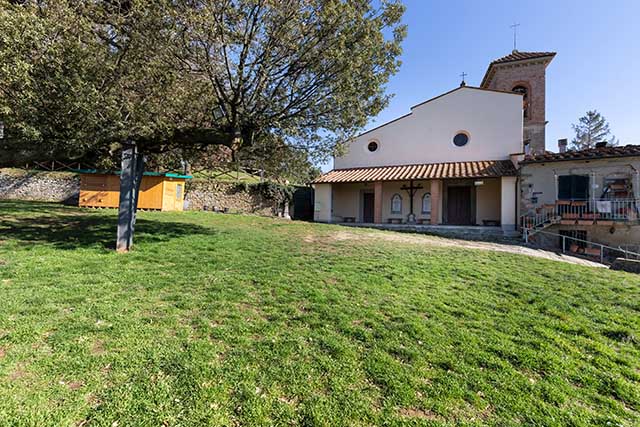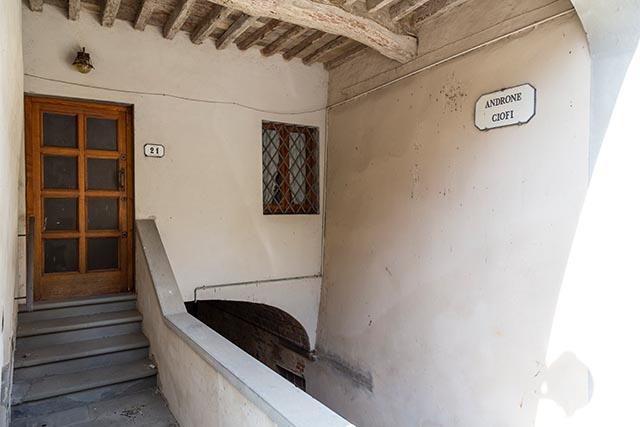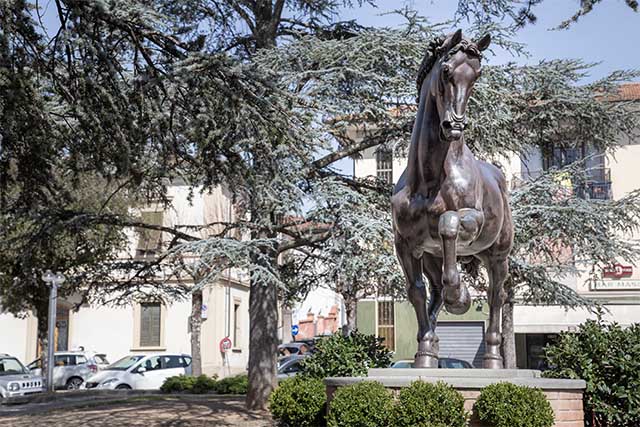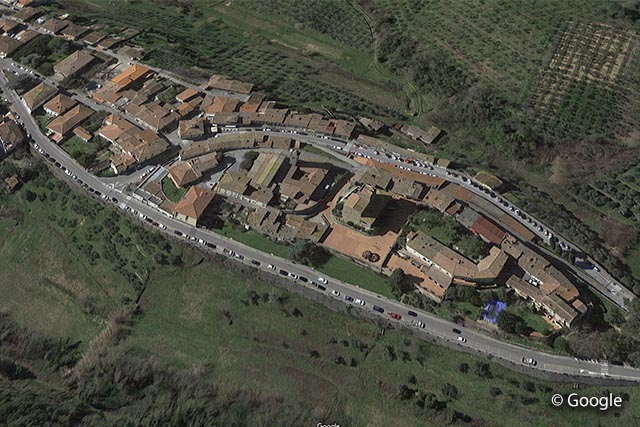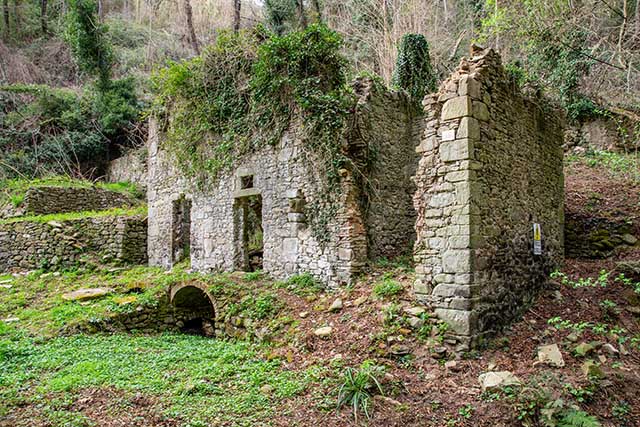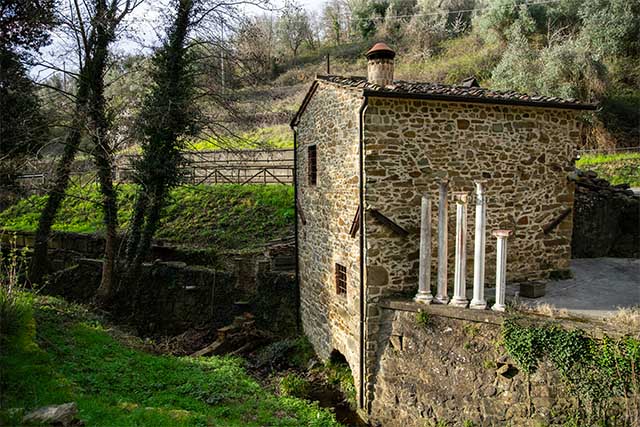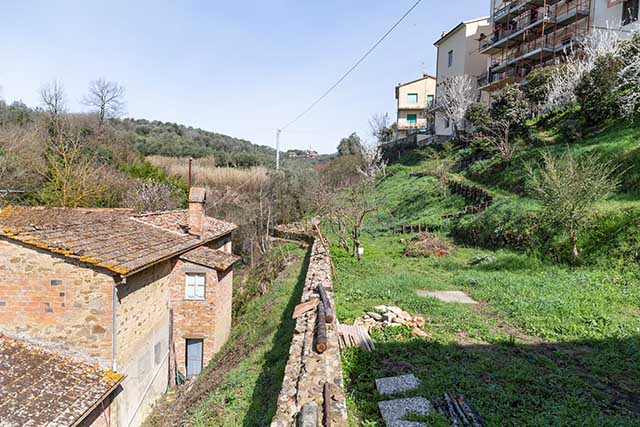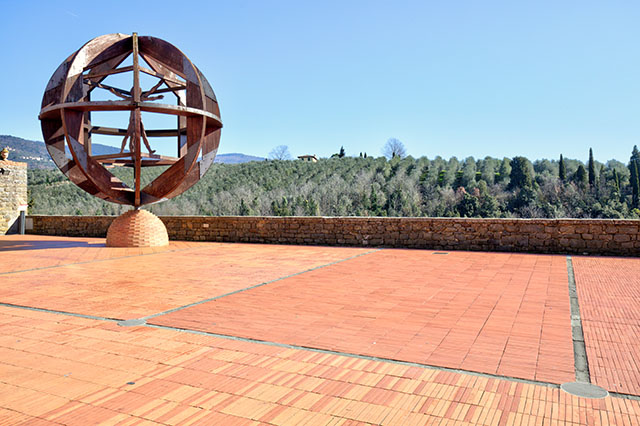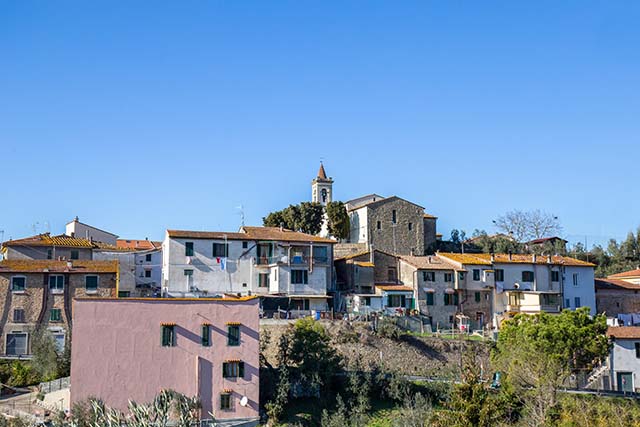Municipality of Vinci
The church of Santa Maria in Faltognano, on the slopes of Montalbano, once belonged to the castle district of Vinci. The inhabitants of the small groups of houses on these hills, well known by Leonardo, were part of the church of Faltognano. In these areas some of the da Vinci family farms and lands stood. The names of those places, such as La Noce, Il Capannile, and Podere Santa Maria, are well preserved in the current toponymy and can be recognized, among other things, with the same names, in the 16th century maps of the Capitani di Parte Guelfa.
During Leonardo’s time, the village tavern stood at the end of Piazza Leonardo da Vinci, strategically positioned between the road to Montalbano and the one that descends, through the narrow vaulted passage of the Androne Ciofi, into the valley of the Vincio, toward the San Pantaleo countryside. Around the 1530s, the tavern was rented to Giovanni, the youngest of Leonardo's half-brothers. The establishment functioned both as a tavern and as a butcher shop, activities requiring a constant use of water. The proximity of the canals that fed the municipality’s mills, positioned next to the tavern-butcher shop, must have been essential, especially for the operation of slaughtering meat.
At Piazza della Libertà in Vinci, right nearby the Museo Leonardiano, stands the beautiful bronze sculpture of the horse Leonardo had planned to create to honor the Duke of Milan, Francesco Sforza. His work remained unfinished, but the idea of completing Leonardo's project in the present day became the mission of Charles Dent, an American scholar of the Genius from Vinci, to whom we owe the sculpture of Japanese artist Nina Akamu. The horse is faithful to the original, albeit in smaller dimensions, and stands today as a universal symbol of beauty, of love for Leonardo, and of consideration for his native village.
Vinci was the place of Leonardo's childhood and early youth. Before moving to Florence, he lived with the family of his father, Ser Piero, who worked as a notary, practicing between Florence and Pisa and residing permanently in the city. Thanks to studies by Renzo Cianchi, it is possible to identify today the buildings that once belonged to the da Vinci family. The house where Leonardo lived in his youth was undoubtedly the family’s principal residence, which was situated, then, in the castle village, on the Piazza del Mercatale (market square), overlooking the open space of the minuscule square of today, Piazzetta Guazzesi.
Leonardo must have known well the many mills clustered in his time along the streams descending from the slopes of Montalbano. Today one of the valleys that best represents the mill-working landscape during Leonardo's time is the Forra di Balenaia, also called the Vallebuia, where very well-preserved structures from the 16th and 17th centuries can be found immersed in their suggestive natural environment. Near Vinci, in the 16th century, stood the mill of the Florentine hospital of San Bonifacio, later called the mill of the Burra, now transformed into a dwelling. From this mill, during Leonardo’s time, one could climb up to the Costareccia farm, one of the major properties of his family.
Leonardo must have known well the many mills that dotted the streams of Montalbano that descended toward the castle of Vinci. Rio della Querceta, for example, flowed through the lands of the communities of Faltognano, Paterno, and Santa Croce, where Leonardo’s family owned several farms. Among the mills powered by the waters of Rio della Querceta, there was also the so-called Mulino del Gatto, just above the house at Anchiano, in the place that today bears the same name. The waters of this stream were also used to power the Vinci castle mills, through a weir intake and a conduit hundreds of meters long, still partly visible.
At the edge of the current Piazza Leonardo da Vinci, the ancient platea (courtyard) of the castle village, stood the municipal mill of Vinci. In 1478 Leonardo was called upon by his family to attend the official act of granting the public mill in perpetuity to the da Vinci family, with the proviso of increasing its value through improvements. In fact, this mill is represented in a late 16th-century map, together with a second works, alongside the village osteria and the millrace derived from the waters of Rio della Querceta. Some ruins of the millrace system are still partially visible nearby the ancient ditch used for drainage discharge.
Mario Ceroli’s Uomo di Vinci (Man of Vinci), inspired by Leonardo’s famous Vitruvian Man, was donated to the city of Vinci in 1987, and is now located on the panoramic square adjacent to the Museo Leonardiano. This sculpture is a reproduction of a work created twenty years earlier, in 1967, entitled Squilibrio (Imbalance). The artist, in fact, departed deliberately from Leonardo's Vitruvian Man, symbol of balance and harmony. Mario Ceroli's Squilibrio makes ironic reference to contemporary reality, remote from the beauty and harmony that Leonardo's Vitruvian Man stands for as a symbol par excellence.
The history of Vitolini, a small town clinging to the slopes of Montalbano di Greti, dates back to the High Middle Ages, when it was a small settlement linked to the city of Pistoia and the church community of San Pietro was dependent on the parish of Greti. The church’s bronze bell bears the signature of its craftsmen, the magistri of Pistoia, as well as the date 1285, the year after the institution of the podestà. Beginning from the mid-14th century, however, Vitolini entered definitively into the orbit of Florence. It was at this stage that the village was fortified with walls and towers, the four towers shown, in fact, in Leonardo's famous bird's eye view drawing in the Windsor Castle collection.





